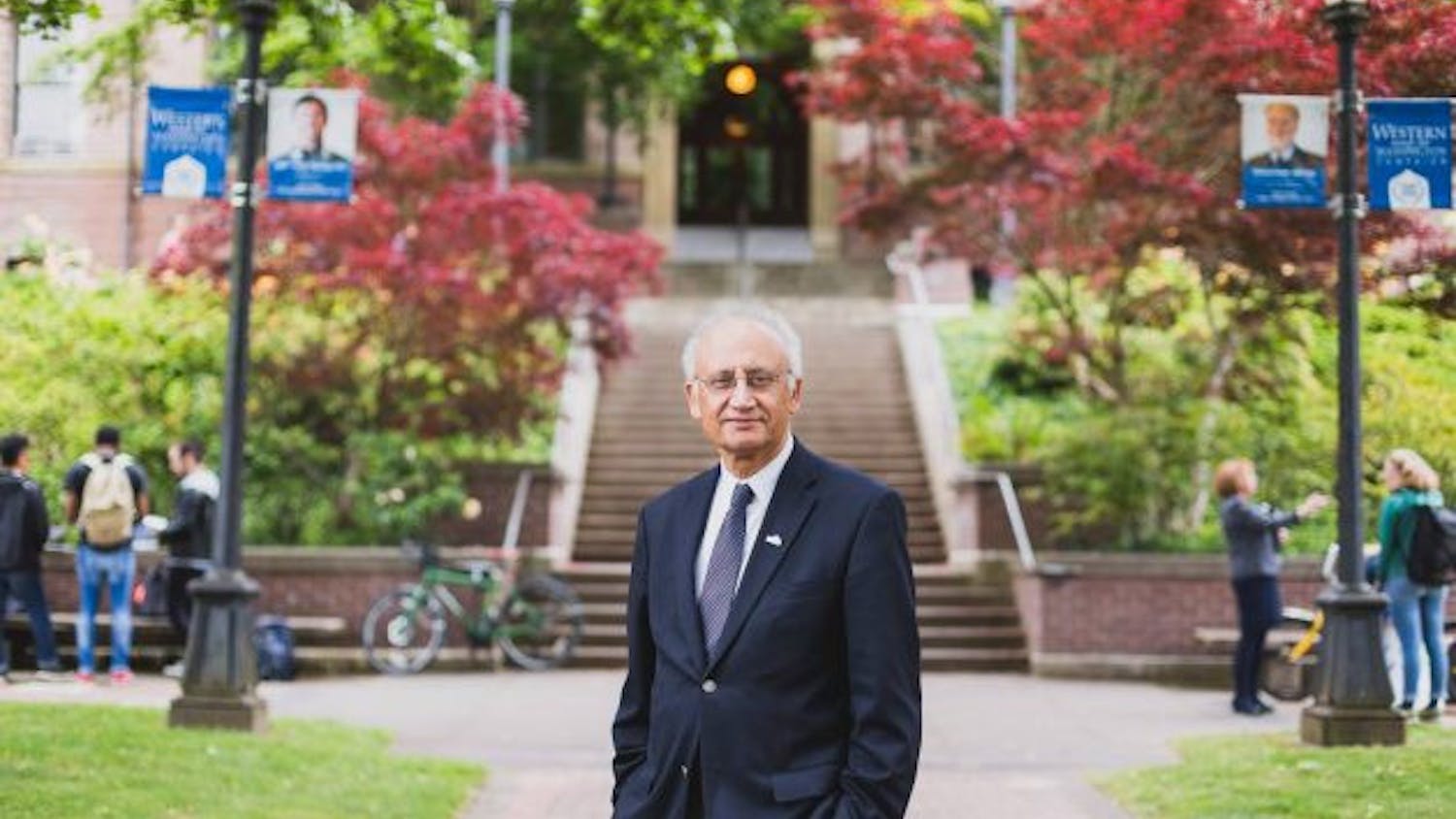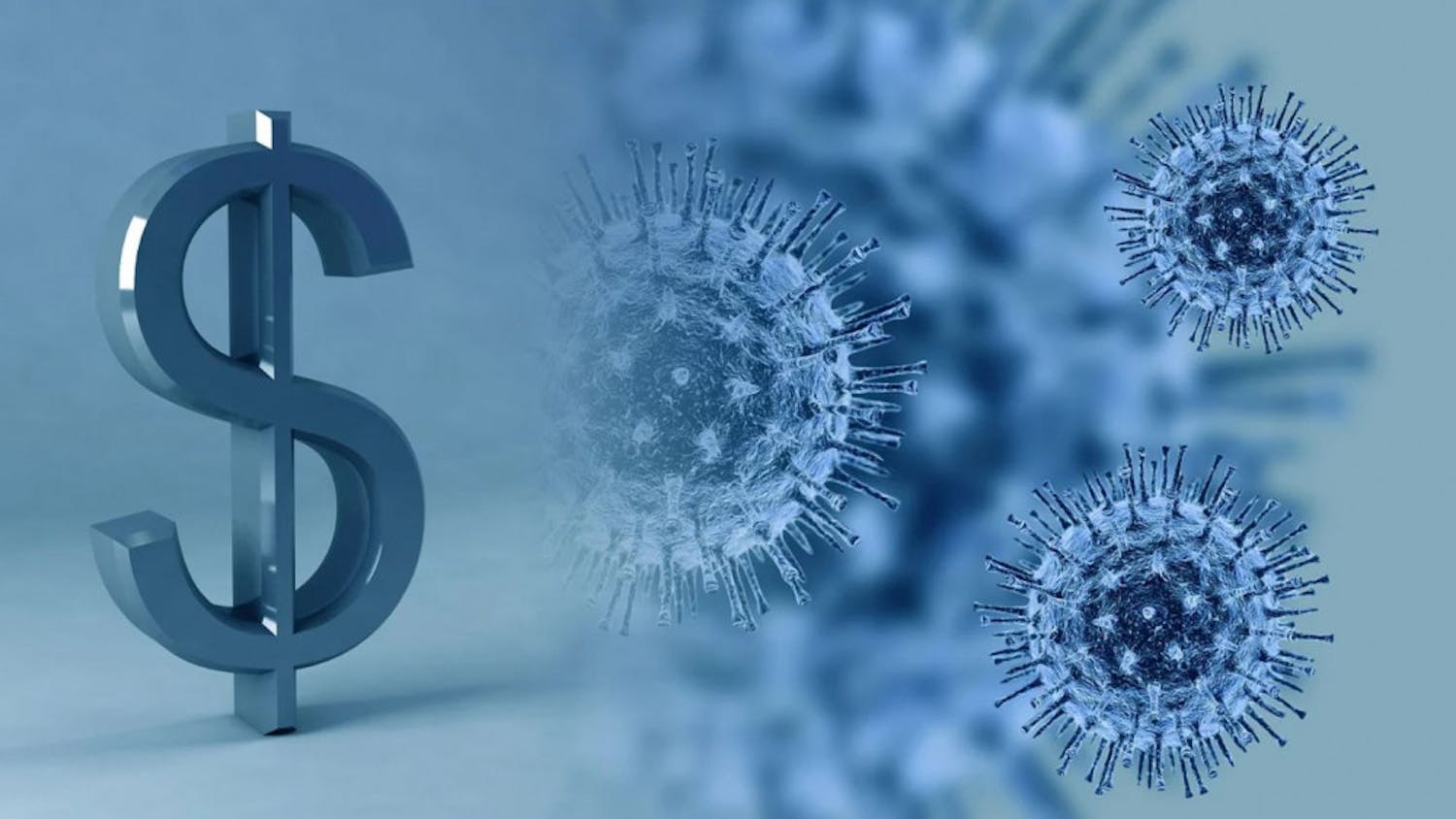
Western's campus during the winter. Photo courtesy of Western Today archives.
Students’ mental health is becoming increasingly vulnerable as the pandemic reaches a new national peak, days grow shorter and sunlight diminishes.
Between 0.5% and 3% of people in the U.S. suffer from seasonal affective disorder, and it affects 10% to 20% of individuals with major depressive disorder, according to the U.S. National Library of Medicine. The National Institute of Mental Health states that to be afflicted with SAD, a person must show symptoms of major depression, occuring in specific seasons for at least two consecutive years.
The amount of rain and sunlight in a region typically determines how severe SAD can get, with symptoms that include oversleeping, appetite changes, weight gain and tiredness or low energy, according to Mayo Clinic. Western Washington University students may be more vulnerable to SAD because of the nature of Bellingham’s climate, with average precipitation levels much higher than the national average.
Bellingham’s average rainfall throughout the year is about 35.8 inches, compared to the national average of 29.94.
Sarah Godoy, the director of Western’s Counseling Center, said that Bellingham’s position in the far north of the country contributes to limited sunlight. The COVID-19 pandemic may also aggravate the effects of SAD, Godoy said.
“Isolation can worsen the experience, as we know that social connections and physical activity can be essential in decreasing depressive feelings,” Godoy said in an email. “Even for students who do not experience major depressive disorder with seasonal components, winter can be a struggle — it’s colder, darker, and with [COVID-19] more people are staying inside.”
Still, Godoy said it’s important to note that SAD is a colloquial term, not a psychiatric diagnosis.
Melody Goddard, who has a doctorate in clinical psychology and is a counselor at her clinic, Tree of Life, in Bellingham, also highlighted this distinction.
Goddard explained SAD as a form of depression.
“People like to call it seasonal affective disorder because they don’t like to think of themselves as depressed,” Goddard said. “But the very best treatment for seasonal depressive disorder, or acute depressive disorder, is to get treatment for depression, not to call it something different.”
Julie Hall, who runs Julie Hall Counseling in Bellingham, had similar thoughts when she explained why she does not use the term “SAD” with patients.
“If we can name it for what it is, then we can do something about it, we can treat it,” Hall said. “It’s not helpful to have a label like that for some people, but I think it’s helpful for others to say that there is such a thing as seasonal affective disorder, and it’s worth exploring.”
Environmental factors like darkness act as an amplifier to someone who is already prone to depression, Goddard said. To help with this, she suggested getting sun when possible as a good way to combat the many dark days, but emphasized the importance of having purposeful contact with others to reduce feelings of sadness.
“In the last little while, I’ve seen more and more young people, and a lot of it is just keeping them in meaningful relationships,” Goddard said.
Overspeculation inside one’s head is another negative aspect of SAD and COVID isolation Goddard advised to avoid.
“Something about darkness and something about rain and then being stuck inside, it gets you too introversive, it gets you all trapped in yourself,” Goddard said. “You’ve got to find ways to get your head and your head space and your emotions out of self-centeredness, out into more wide-open spaces.”
Peter French, a second-year student at Western who battles SAD in the colloquial sense, takes measures to avoid these tendencies.
“For me, the biggest thing that keeps my head out of the gutter is getting outside for some fresh air every day, even if it's just, like, five minutes,” French said. “I also need to stay creative. Letting my mind run free is what makes me feel like I’m not trapped.”
French keeps things organized, stays hydrated and works out to reduce the strain that SAD puts on him. He said it affects him in waves, where he loses energy, starts to use his phone more and goes out less.
“I like to think every year I get a little bit better at dealing with SAD, and it teaches me balance,” French said.
In dealing with COVID-19 induced isolation and SAD as factors against positive mental health, Hall explained the gravity of the situation.
“Humans are wired for connection and contact, so the isolation that most people are experiencing right now is not good,” Hall said. “If you’re already struggling with just normal life stuff, or family conflict, or old trauma or current stress, it’s all being lived against the backdrop of this pandemic.”
Hall named isolation as the worst thing for people in terms of mental health, and stressed the need for proximity among humans. She said movement, getting outside and reaching out to people are the best ways to cope this winter season, along with not being too hard on oneself.
“It’s a really tough time, and if we’re not completely thriving it just makes sense to give ourselves a little bit of a break if it’s not looking the way that we wish that it would,” Hall said.
Jason Upton is a second-year journalism major and reporter for The Front. He can be reached at jasonupton.westernfront@gmail.com.





